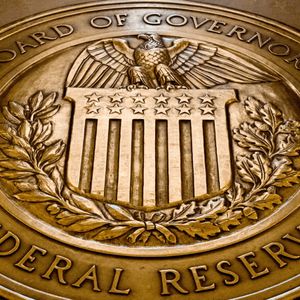Ripple’s $5 Billion Bid to Buy Circle Rejected
5 min read
The attempted acquisition was a strategic move by Ripple to expand its influence even more in the stablecoin market, especially after Circle’s recent US IPO filing. While Ripple has not confirmed the bid, it fits in with the company’s broader expansion push, which included its recent $1.2 billion acquisition of prime brokerage Hidden Road. Ripple is also emerging from regulatory headwinds after settling with the SEC. Meanwhile, Tether is planning to launch a new US-focused stablecoin product by late 2025 or early 2026, depending on legislative progress. The firm is positioning itself as a responsible partner to US regulators while also still maintaining dominance with its $150 billion USDT. The US Treasury predicts that the stablecoin market cap could surge to $2 trillion by 2028, due to the sector’s importance in the global financial system. Ripple’s Quiet Power Move Rejected Ripple reportedly made a bid of up to $5 billion to acquire Circle, the issuer of the USDC stablecoin, but the offer was rejected for being too low. This is according to a Bloomberg report on April 30. The attempted acquisition came just weeks after Circle filed for an initial public offering in the United States, which indicates a strategic move by Ripple to expand its footprint in the stablecoin market. While the deal was not accepted, it is not clear whether Ripple plans to submit a new offer. The company still has to confirm or deny the report, and no comment was received from Circle either. Ripple was last valued at $11 billion in 2024—a figure CEO Brad Garlinghouse has since called outdated—and has been on a serious acquisition streak. Earlier in April, it acquired prime brokerage firm Hidden Road for $1.2 billion to enhance trading activity related to XRP and the XRP Ledger. This aggressive expansion comes as Ripple begins to resolve long-standing legal challenges. A court ruling in August of 2024 found Ripple liable for $125 million in its case with the US Securities and Exchange Commission (SEC), which was originally filed back in 2020. However, in March, Garlinghouse stated that the SEC will not appeal the ruling, which resulted in Ripple agreeing to pay a reduced sum of $50 million. The company has also been increasingly active in certain political circles. Garlinghouse and Ripple’s chief legal officer, Stuart Alderoty, reportedly met with US President Donald Trump earlier this year. Ripple also contributed $5 million to Trump’s inauguration fund and was represented at official events on Jan. 20. Tether Eyes New US Stablecoin Launch New things are in the works for other stablecoin issuers as well. Tether, the issuer of the world’s largest stablecoin by market cap, is planning to launch a new stablecoin product specifically for the United States market as early as this year. In an April 30 interview with CNBC , CEO Paolo Ardoino stated that the move could happen by the end of 2025 or early 2026, depending on how quickly US lawmakers advance legislation regulating stablecoins. While USDT already dominates the global stablecoin market with a nearly $150 billion market cap and approximately 66% market share, its use in the United States is still limited, where Circle’s USDC is more prevalent. Paolo Ardoino during his interview with CNBC Ardoino said that Tether is working closely with US regulators and law enforcement agencies to position itself as a responsible player in the financial system. He pointed out that Tether sees itself as an exporter of the US dollar through digital rails, and described the dollar as “the best product the United States ever created.” Tether generates revenue by accepting US dollars to mint USDT and investing those funds into liquid and yield-generating assets like US Treasury bills. The company recorded a net income of close to $14 billion in 2024, which made it the most profitable stablecoin issuer. Despite the growing traction of USDC, especially after President Donald Trump’s election victory, Tether is still very confident in its dominant position. Ardoino explained that USDT was originally designed to serve users in emerging markets, like small villages in Africa or merchants in Istanbul. However, for the US market, the company is working on a “different product” that is more tailored to domestic needs. Analysts at Web3 research firm Nansen still firmly believe that the stablecoin sector is likely to follow a “winner-takes-most” dynamic, which suggests that USDT’s lead may continue even amid rising competition. Stablecoin Market Set for Massive Expansion With all of these latest developments, US dollar-pegged stablecoins could see their combined market cap surge to around $2 trillion by 2028. This is according to the United States Department of the Treasury’s Q1 2025 report that was released on April 30. Although the current stablecoin market cap sits at roughly $230 billion, the Treasury believes evolving market conditions could accelerate growth over the next three years. These digital assets have become widely used as on-chain cash equivalents and are increasingly seen as a modern payment mechanism. A stablecoin is a type of cryptocurrency that is specifically designed to maintain a stable value by being pegged to a traditional asset, like the US dollar. For example, 1 USDT or 1 USDC is typically equal to 1 USD. This stability makes stablecoins very useful for payments, trading, and storing value without the volatility of other cryptocurrencies like Bitcoin or Ethereum. Conceptual spectrum of stablecoins’ impact (Source: US Treasury ) The report also shed some light on the rise of tokenized money market funds, which offer yield-bearing alternatives to stablecoins. However, stablecoins are still deeply embedded in the blockchain economy. This latest commentary from the Treasury is another step in the US government’s growing embrace of blockchain innovation, after President Donald Trump’s second-term inauguration in January. In a December report, the Treasury already acknowledged that cryptocurrency could form the foundation of a new financial infrastructure and could also drive greater demand for US Treasurys. Stablecoin issuers like Tether and Circle invest fiat reserves in short-term, liquid instruments like Treasury bills and repurchase agreements. The Treasury revealed in December last year that this practice modestly increased demand for short-dated Treasurys. The April report also suggests that upcoming legislation will likely formalize these practices by requiring stablecoin issuers to hold short-term government debt, strengthening the connection between digital dollars and the traditional financial system. The growing use of stablecoins, however, could also exert some pressure on retail banks to offer higher interest rates to attract depositors. The current state of the stablecoin market (Source: US Treasury ) As of late April, Tether’s USDT is still the dominant player in terms of market share and its market cap of around $150 billion. Circle’s USDC follows with a market cap of approximately $60 billion.

Source: Coinpaper



